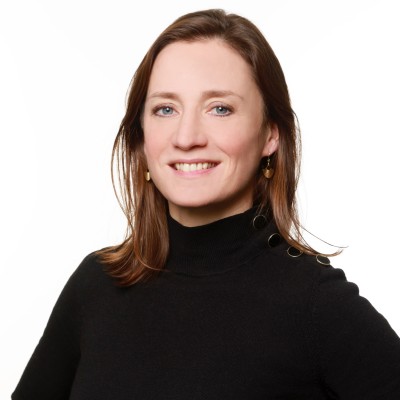Strategies to reaching the right people with open data – examples from cities around the world

Opening your data to the world is just the first step in a journey - for open data to be truly effective it needs to be found, accessed, and consumed by the right audiences. We look at how four major cities are successfully tackling this challenge.
The idea behind open data is simple – making information easily available to all so that they can benefit through increased insight. It supports greater transparency, better decision making both internally and across your partner community through self-service data access, and enables the launch of new, innovative data services.
On the positive side the open data movement has been incredibly successful in sharing information. For example, Data.europa.eu, the EU’s open data portal, now includes over 1,398,870 datasets from 37 countries, while Opendatasoft’s own hub contains nearly 26,000 datasets from our 300 customers.
How can we increase open data usage?
However, it is one thing to make data available – and another to ensure it is being found and used by the right audiences. Otherwise there’s a risk that data will simply sit on a portal, without its benefits being realized. That was the theme of a recent event at the New York City Open Data Week. Entitled Improving how we target developers and users of open data and organized by data.europa.eu, it brought together representatives from leading cities to explain their strategies for increasing open data use:
- Els Breedstraet, data.europa.eu
- David Regeczi, data.europa.eu
- Zachary Feder, City of New York
- Diana Filippova, City of Paris
- Benedikt Kotmel, City of Prague
- Luke Binns, City of Dublin
Community outreach - New York
New York City’s open data law is over ten years old, and its portal now includes a wide range of information from across different departments within the city. A community outreach strategy is key to ensuring this data reaches the right people, whether they are city employees, citizens or businesses. NYC Open Data Week itself is a key part of this outreach program, featuring a range of events from introductory sessions on open data through physical exhibitions to hackathons.
The city works to educate people in their communities, through direct outreach, and by teaching leaders in existing networks and within the public sector about the benefits of open data. This focus on internal and external users helps increase the consumption of open data across the city.
Creating bilateral data services - Paris
Opendatasoft customer Paris was another city that opened its data early to the world with a comprehensive, easy to use portal that was created as part of its long term strategy for openness and transparency. This was backed up with an open data law that mandated that companies involved in public sector contracts (in areas such as energy) also had to share their data with the city.
However while the platform was being used, the city wanted to increase data sharing and ensure that it was creating new partnerships and activities. As part of this it has introduced a focus on building bespoke relationships with other, private sector data providers to bring data together and share it with specific audiences for their own uses. These B2B data services are not open or available to all, but are focused on particular needs and operate alongside the public, B2C data that the portal offers to all.
Focusing on internal sharing through self-service - Prague
Often the biggest user of open data in cities are city employees themselves. They need it to improve efficiency, understand the wider context of their operations, and support better, more informed decision-making.
The city of Prague focuses heavily on meeting the needs of these public sector users. That involves listening closely to their requirements and collaborating to make the right, high-quality datasets available to them through self-service. For Prague, the success of open data is not measured by how many datasets are made available to all, but how those that are opened are being used effectively within the public sector. Essentially opening data to the wider world is a positive side effect from sharing with internal users.
Encourage change through challenges - Dublin
Founded by the city’s four local authorities, Smart Dublin shares open data through its portal as part of its mission to transform public services and enhance quality of life for citizens. However, while data was available on a wide range of subjects, from transport and the arts to the environment and public health, it was difficult to see who was using it and whether it was delivering maximum value.
Therefore, Smart Dublin worked with partners to launch the Dublin Region Open Data Active Travel Challenge. Entrants first submitted a short application describing what they could do with open data to improve travel. Those that were shortlisted were given support to develop their ideas over an 8 week period, with the best entries receiving cash prizes. Winners included:
The 15 minute city, which shows everything a user can access within a 5,10 or 15 minute walk of their current location
Analysis of active travel via bike or walking to schools. This highlighted areas where active travel levels were low, enabling councils to plan interventions that could address any issues that were preventing its adoption.
A single application that brings together bike parking locations across the city, combining this with bike share availability from private providers to give a complete picture for users.
The importance of taking a user centric view
Simply opening data to the world is not enough to achieve true data democratization. As these four approaches demonstrate, successful data sharing requires organizations to listen closely to their potential users, focus on the benefits that open data provides to them, and design services that best meet their needs. This will drive greater data usage and spur further innovation across the public sector and beyond.
 Data Trends
Data Trends
How successful are governments at sharing their data with citizens and businesses? The latest Open Data Maturity report provides an overview of progress across Europe, and highlights the importance of improving data portals and measuring impact to future success

Data drives effective, well-functioning smart cities and helps build local ecosystems that bring together all stakeholders to meet the needs of the entire community. However, sharing data between stakeholders can be difficult - based on recent Gartner research we explain how urban data exchanges transform smart city data sharing.


